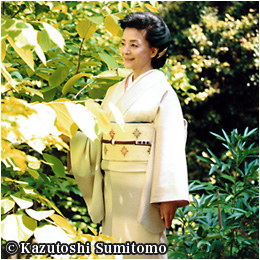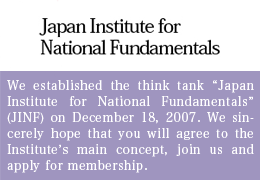New Threat to International Security: North Korea’s Alleged Success in Miniaturizing Nuclear Warheads
“We (North Korea) have already succeeded in miniaturizing nuclear weapons, and in fact now possess a number of such weapons in our arsenal.”
These remarks were allegedly made by Lee Geun, head of North Korea’s US Affairs Bureau, to a former CIA operative on a visit to North Korea last fall, according to a report by the Japanese newspaper Sankei Shimbun, datelined Seoul, June 15.
What Lee claimed then, in fact, is that North Korea has finally managed to make nuclear warheads small enough to mount atop missiles. If true, North Korea’s nuclear threat to Japan and its Asian neighbors, as well as the United States, will increase momentously. The latest North Korean claim should be viewed as a matter of grave new anxiety, potentially causing the current geopolitical situation in the Asia-Pacific region to shift drastically.
North Korea, which has already developed missiles as a means of war-head delivery, has over the years secretly exported Nodong missiles to third-world countries, starting with Pakistan.
For example, North Korean sold Pakistan US$ 3 billion worth of Nodong missiles in December 1993, the account settled in cash. Later, Pakistan named the missile “Ghauri” after a legendary Islamic warrior who fought the Hindis. (“Shopping for Bombs: Nuclear Proliferation, Global Insecurity, and the Rise and Fall of A.Q. Khan,” by British journalist Gordon Corera, 2006: Network. Japanese translation published by Business-sha, Tokyo, 2007)
North Korea’s sale of missiles has not been limited to Pakistan alone. In 2000, the hermit state sold 50 Nodong missles to Lybian leader Moammar Gadhafi for US$600 million. Iran, Mexico, and Venezuela are its cherished clients, too. In fact, North Korea will now sell anything under the sun in a desperate effort to get cash.
But what if these nations, with North Korea in the vanguard - or terrorist forces such as Al Qaeda - should get hold of both missile technology and miniaturized nuclear warheads at the same time? This would be the worst-case scenario for the entire world. Has North Korea indeed acquired the miniaturizing technology it claims to have?
On June 13, South Korean Defense Minister Kim Kwan-jin told a parliamentary defense committee he believes North Korea has probably succeeded in miniaturizing nuclear warheads. Kim based his assertion on the lapse of time since North Korea detonated nuclear devices in 2006 and 2009, which he described as “enough time for them to have succeeded in miniaturization.”
The Deep Darkness of International Affairs
Kim was further quoted as telling the committee: “The possibility of a surprise provocation with various means and methods is steadily increasing while (the North is) pressuring us with rhetorical threats…North Korea has been repeating maritime invasion drills for forces assigned to secure the East Sea (the Japan Sea) and the West Sea (the Yellow Sea) (when the right time comes).”
In a public opinion poll on the North Korean nuclear threat conducted in South Korea last February, 66.8 percent of the respondents said the country should arm itself with nuclear weapons. Now that the North claims to have succeeded in miniaturizing nuclear warheads, the South’s public opinion is expected to further harden against Pyongyang. Hong Hyung, editorial writer for the Toitsu Nippo, a Japanese-language weekly journal published by pro-Seoul Korean residents in Japan, considers it a matter of course to be well-prepared for such a threat which could jeopardize the very existence of the nation and its people. Hong had this to say:
“At this stage, however, there are only two major options that are being debated within South Korea’s political circles:1) The South should demonstrate deterrence against the North through diplomatic negotiations conducted on its own; or 2) The South should ask the US to deploy tactical nuclear weapons in South Korea once again to create deterrence against the North.
“Now, it is all too clear in everybody’s eyes that option 1) won’t work. The public are facing the facts far more realistically - and intelligently. South Korean politicians, from President Lee Myung-bak down, are faced with a situation in which they must seriously grapple with the issue of nuclearization of the nation.
“I also don’t think it likely for our politicians and diplomats to take option 2) in the spirit of compromise. Surely, South Korea-US relations are very close at this juncture, but the South Korea and US Joint Command is scheduled to be disbanded in 2015. Also, the US is expected to start pulling out of Afghanistan as early as next month. Under such circumstances, would it be at all possible to entice the US, already in the process of withdrawing or scaling down forward deployment, to once again be on the front line of South Korean defenses? I doubt it. In fact, we shouldn’t even bother to ascertain US willingness, because option 2) is hardly the path for an independent nation to take.”
Hong points out South Korea’s defense structure is becoming fragile, noting:
“The coming disbanding of the Joint Command will require South Korea to stand up to the North fundamentally on its own. In other words, South Korea will pit itself against North Korea, as well as China standing closely behind it, for itself. In order to be sufficiently prepared to cope with China, which is making North Korea its virtual protectorate, our nation must start strengthening defenses almost immediately. It would be too late if we were to start the process after the Command is gone.”
Compared with Japan, South Koreans are at least gripped with a deep sense of imminent peril. In South Korea’s next presidential election slated for 2012, national security is expected to be the biggest issue. Meanwhile, for some baffling reason, Japanese fundamentally lack the readiness to discuss North Korea’s stepped-up development of ordinary and miniaturized nuclear weapons as a serious threat to national defense. It is time to ponder how North Korea has managed to acquire the coveted technology to miniaturize nuclear warheads, and try to discover what lies hidden deep in the deep darkness of international affairs behind it.
The possibility that North Korea may have developed miniaturization technology on its own is generally viewed as not too far-fetched. Although North Korea’s nuclear program is regarded by most experts as a failure, it did conducted nuclear tests in 2006 and 2009. In a nuclear nation, it is not unreasonable to expect the development of miniaturization technology following a success in the development of ordinary nuclear weapons.
The New Axis of Evil
However, another - and greater - possibility is North Korea may have obtained the necessary technology from Pakistan. As is too well known, Pakistan has developed its nuclear weapons thanks to China’s assistance. In fact, since Deng Xiaoping decided in 1982 on a policy of proliferating nuclear weapons across the third world, centering around the Islamic and Socialist blocs, China has aggressively spread nuclear technology across the third world. As a result, Pakistan now possesses more than 100 nuclear bombs, and is believed to have surpassed Britain as the world’s fifth largest nuclear nation. It is also believed to have succeeded in miniaturizing nuclear weapons, which Indian intelligence sources estimate to number at least 50.
While there is no data confirming the transfer of Pakistan’s miniaturizing technology to North Korea, such a possibility is considered great in view of the closeness of the bilateral relations over the years.
Mrs. Benazir Bhutto, the former Pakistani prime minister who was assassinated in 2009, called herself “the mother of Pakistan’s missiles” while in office, vigorously doing business with North Korea. It was while she was still prime minister that Pakistan purchased missiles from North Korea for the first time. As mentioned earlier, the account was settled in cash, and Pakistan’s purchases of North Korean missiles have since continued.
During the 1997-98 period, 12 Nodong missiles were sold to Pakistan for a total of US$3 billion. At the time, it is believed, Pakistan offered North Korea uranium enrichment technology in place of cash. (“Shopping for Bombs.”)
Over the years, Pakistan and North Korea have traded vitally confidential matters with each other, such as missile and uranium enrichment technology. Therefore, it would certainly be possible to presume that technology for miniaturization of nuclear weapons has duly been added to the list along the way.
We are now faced with the reality of North Korea announcing it has armed itself with miniaturized nuclear weapons. If there is one nation that has the ability to stop Pyongyang from its aggressive nuclearization scheme, that would be China - if it truly is willing to do so - because China has extended economic and military aid to both North Korea and Pakistan on a scale large enough to easily determine their fate. However, China has not intervened against North Korea. That being the case, I think it mandatory to call China, North Korea, and Pakistan the “new axis of evil.”
Confronted with these circumstances, there is in South Korea, as noted above, at least a sense of imminent danger. The problem lies with Japan - a starry-eyed nation almost totally devoid of the awareness of this impending threat to national security. Unless there is a change in this attitude, I’m afraid our nation may be doomed.
(Translated from “Renaissance Japan” column no. 466 in the June 30, 2011 issue of The Weekly Shincho.)








